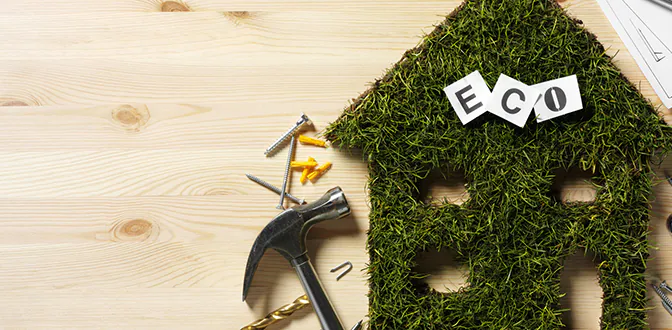The construction industry is choking our cities. Replacing traditional construction raw materials with green building materials is the only plausible way to stop this. The green building concept not only focuses on mitigating environmental problems, but also optimizes the socio-economic benefits of switching to eco-friendly building materials.
Green building materials – the most sustainable way to transform the construction industry
Buildings are no longer just structures in an urban landscape. Today, the expectations from the construction industry are to create buildings that are in close alignment with the environment. Green construction materials are an intelligent approach to manage non-renewable resources and facilitate the reduction of the carbon footprint. By improving the resilience and flexibility of structures, eco-friendly building materials promote health and wellbeing for both those constructing and utilizing a building.
Read: Green Buildings – Global Outlook
Top five green construction materials
1. Sustainable concrete
Did you know that concrete alone is responsible for close to 10% of global CO2 emissions? Perhaps this is the reason why builders are switching to eco-friendly alternatives for this essential construction material. Typically, sustainable concrete is a mix of recycled materials like slag, wood chips, and crushed glass. Recently, Wagner, a leading construction company, has created earth friendly concrete (EFC). Instead of Portland cement, concrete is prepared using fly ash and blast furnace slag.
Similarly, several construction companies are using recycled plastic instead of steel as the reinforcing agent in concrete to reduce CO2 emissions by 50%.
2. Wool bricks
Another green construction material that is heavily in demand is wool brick. 40% stronger than traditional bricks, these bricks contain sheep’s wool along with a polymer derived from seaweed. Wool bricks are environmentally-friendly construction materials that dry quicker, increase resistance to flexion, and reduce the chances of deformations and fissures in the building.
Unlike traditional bricks, wool bricks do not require the ‘firing’ process, which earns them the badge of being an energy efficient alternative. Most of all, the fact that these bricks are resistant to cold-wet climates, common in Europe, is why many major building companies have already adopted wool bricks in their construction projects.
3. Triple-glazed windows
When most construction companies were adopting double-glazed windows, an alternative arose in the form of triple-glazed window panes. Triple-glazed windows, due to their excellent resistance to problems related to condensation, are well suited for retrofitting in colder climates.
Along with preventing heat from leaving the building, triple-glazed windows reduce sound transmission and enhance the security of the building.
4. Solar roof tiles
Tesla’s announcement regarding solar roofs has sparked renewed interest in solar roof tiles. Going beyond just the traditional function of protecting from natural elements, solar tiles work on the principle of capturing sunlight and turning it into electricity. Unlike solar panels fixed to existing roofs, these tiles are fully integrated into the building.
The solar roof from Tesla, for instance, has an integrated Powerwall battery which stores the energy collected throughout the day to be used in case of power failure. The amount of energy produced by the solar roof can also be customized to fit specific energy requirements.
5. Paper insulation
A superior alternative to chemical foams, paper insulation is made from recycled cardboards and newspapers. Instead of the traditional methods, paper insulation can be easily blown into cavity walls to create a draft-free space by filling in the cracks. Additionally, paper insulation is fire-retardant and insect-resistant, making it safe and beneficial on a number of levels.
Wrapping up
Green buildings are no longer just a fad. Rather, as consumers’ turn aware about the benefits of living in eco-friendly buildings, construction companies too are aggressively switching to use green building materials. This development has also resulted in the popularity of LEED projects – which according to our industry experts has diverted more than 80 million tons of waste from landfills.



